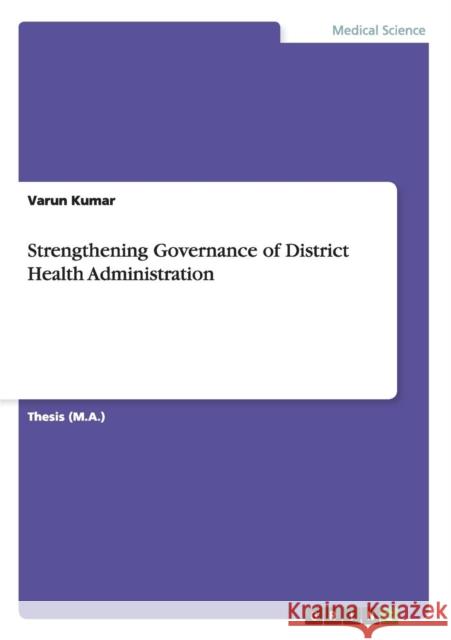Strengthening Governance of District Health Administration » książka
Strengthening Governance of District Health Administration
ISBN-13: 9783640708833 / Angielski / Miękka / 2010 / 72 str.
Strengthening Governance of District Health Administration
ISBN-13: 9783640708833 / Angielski / Miękka / 2010 / 72 str.
(netto: 223,88 VAT: 5%)
Najniższa cena z 30 dni: 231,90
ok. 16-18 dni roboczych.
Darmowa dostawa!
Thesis (M.A.) from the year 2008 in the subject Health Science, grade: Distinction, University of Leeds (Nuffield Centre for International Health and Development), course: Masters in Health Management, Planning and Policy, language: English, abstract: In recent years, the governance of the health system has become a key issue of discussion for international organisations such as the WHO, the WB, UNDP, USAID and the EC. Furthermore, they state that spending on health would not alone achieve the intended results in health without addressing governance. The District Health Administration (DHA), generally called the office of the Civil Surgeon in Bihar, India, is considered a bridging administrative unit from national and state government to the community at village level. Moreover, this is a full-bodied unit with management and the administrative power under the leadership of Chief Medical Officer/Civil Surgeon and Assistant Chief Medical Officer with various health programme officers and support staff. Although health service delivery is seen to have improved in Bihar in recent years, issues such as leadership, management, accountability and transparency would seen to be weak in the DHA. This study aims to recommend specific strategies to strengthen governance of the DHA in Bihar. In doing so, it first identifies and critically analyses the causes of poor governance of the DHA. Moreover, it reviews theories and documented effective examples of strengthening governance in the district level health systems in low and middle income countries. This study finally analyses various strategies for strengthening governance and outlines appropriate governance for the DHA in Bihar.To undertake this study, a framework for strengthening governance developed by Brinkerhoff et al. (2008) is used, which covers leadership and management capacity, accountability, community participation and transparency in decision making. The methodology primarily involves reviewing secondary data;











